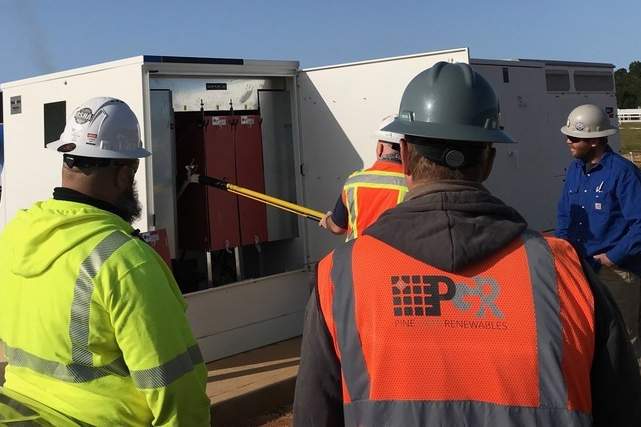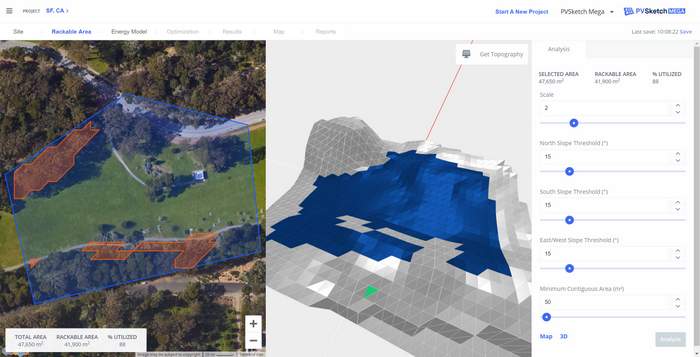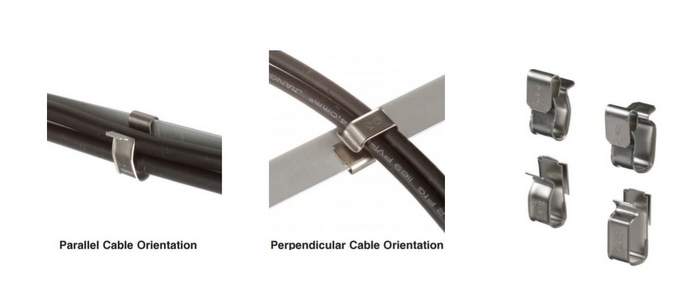In large-scale solar, every penny counts, so it helps to stay up to date with every way to achieve better construction efficiencies, cost savings or improved LCOE. Here are some innovations and ideas that caught our eye this month.
1. Standardizing with ClearSky
Equipment standardization for portfolio-level purchasing is a proven strategy to simplify procurement, establish repeatable construction practices, and promote efficient commissioning. While racking, modules, inverters and transformers are common bulk buys, the MV interconnection components are often excluded. A collection of components, and the work product of highly specialized labor, the interconnection has historically been seen as a bespoke assembly, not a product.
“Standardizing the interconnection was definitely part of our strategy to be successful in Michigan,” said Matt Massarelli, vice president of EPC operations at Pine Gate Renewables, talking about a portfolio of 14 projects in Michigan. “We wanted to eliminate as much uncertainty from construction and commissioning as possible to ensure timely commercial operation of the entire portfolio. The myPV ClearSky Interconnection product line wrapped the revenue grade metering, protection, and even Utility communications these projects required in a single pad-mount delivery.”
Developed by Solar Operations Solutions, LLC (Solar-Ops) the myPV ClearSky Interconnection is one of several pad-mount and SCADA products that are specifically designed to help developers and EPCs simplify the construction and operation of large PV solar facilities. Available in standard 15kV, 25kV, and 35kV models, with lead-times averaging between 12-14 weeks, Solar-Ops was able to quickly specify and propose interconnections for the entire portfolio in only a few days.
Relatedly, RatedPower launched a new feature to generate the basic engineering of some of the most common substations in pvDesign: line to transformer substation, single busbar substations and double busbar substations.
2. STAR Comps to avoid Overcomps
Solar risk management firm kWh Analytics collaborated with 10 of the top 15 solar asset owners on a huge industry-wide energy validation study, the 2020 Solar Generation Index, analyzing over 30 percent of non-residential PV systems in the U.S. On average, systems underperformed their initial estimates by 6.3% on a weather-adjusted basis. Not great! The report concluded that performance estimates are systemically over-estimated. In parallel, kWh Analytics launched Solar Technology Asset Risk (STAR) Comps reports with leading sponsors and asset owners, including New Energy Solar and Captona. These will use industry data to validate solar production estimates on more than 1 GW of solar assets. Equipped with objective data and comparables through STAR, the solar industry can course correct and improve accuracy and certainty of its investment returns.
3 PVSketch Mega
Global solar sales and design software company PVComplete announced the January 2021 public release of PVSketch Mega, a precision layout, modeling and proposal web app for utility-scale PV projects. PVSketch Mega informs early stage site assessment and system design with the power of advanced cloud computing. The platform makes it possible to run thousands of permutations of layouts to inform important development decisions by quantitatively evaluating how choices will affect round coverage ratio (GCR), kW output capacity and production values.
Explains PVComplete CEO Claudia Eyzaguirre: “PVSketch Mega is powerful on its own, but even more so when paired with PVCAD Mega to deliver an integrated utility-scale solar project software platform for developers, engineers and installers. It’s a direct sales-to-engineering channel. Developers can seamlessly export a PVSketch Mega project to PVCAD Mega, where engineers can then refine the final design in the CAD environment — tweaking layouts, generating full pier schedules and exporting shade scenes to PVSyst.”
4. Carlson PD Command
Carlson Machine Control released Carlson PD Command, a site management software that provides multiple views of pile driving machines in the field. This is a partnering software solution to Carlson’s PD Grade system developed for pile driving machines. Carlson PD Command functions as a link between the office and machines by allowing supervisors to remote into machines and send messages to operators. Supervisors can upload files and edit projects to a single machine, or your entire fleet, utilizing an internet connection. Command shows project progression, tracks machine utilization, and generates custom productivity reports in real-time.
“Our customers in the solar, construction, and piling industries can benefit from the GPS-guided PD Grade System, and now utilizing Carlson PD Command, Supervisors can have a complete handle on their site’s productivity,” says Tim Jones, Director of Carlson Machine Control. “PD Command is the key for optimization by providing feedback on performance and allowing sites to navigate the day-to-day for the greater goal of improvement.”
5. BOS Balance with Panduit
Over the past decade, reductions in the cost of solar energy have largely been due to gains in panel production and efficiency. As these gains diminish, the balance of system hardware such as cables, clips, and mounting systems will have a larger role to play. Panduit, a global supplier of solar BOS, has some new Metal Solar Edge Clips that can be installed without additional tools in an average of 11 seconds; 10 seconds faster than the cable tie average, according to the manufacturer. Available starting Oct. 30, these Metal Solar Edge Clips have been tested in harsh outdoor conditions to ensure they are durable enough to pair with IEC 61215 standard panels, helping to further reduce costs over time.
For some further research, Panduit’s latest renewable energy white paper, Finding Balance: The Role of Balance of System in Delivering More Efficient and Cost-Effective PV Installations, explores the role balance of system plays in advancing solar innovation and how a holistic approach to physical infrastructure design can help deliver greater overall efficiency and cost savings to large and utility-scale PV installations. Download it for free here.
— Solar Builder magazine



Leave a Reply
You must be logged in to post a comment.